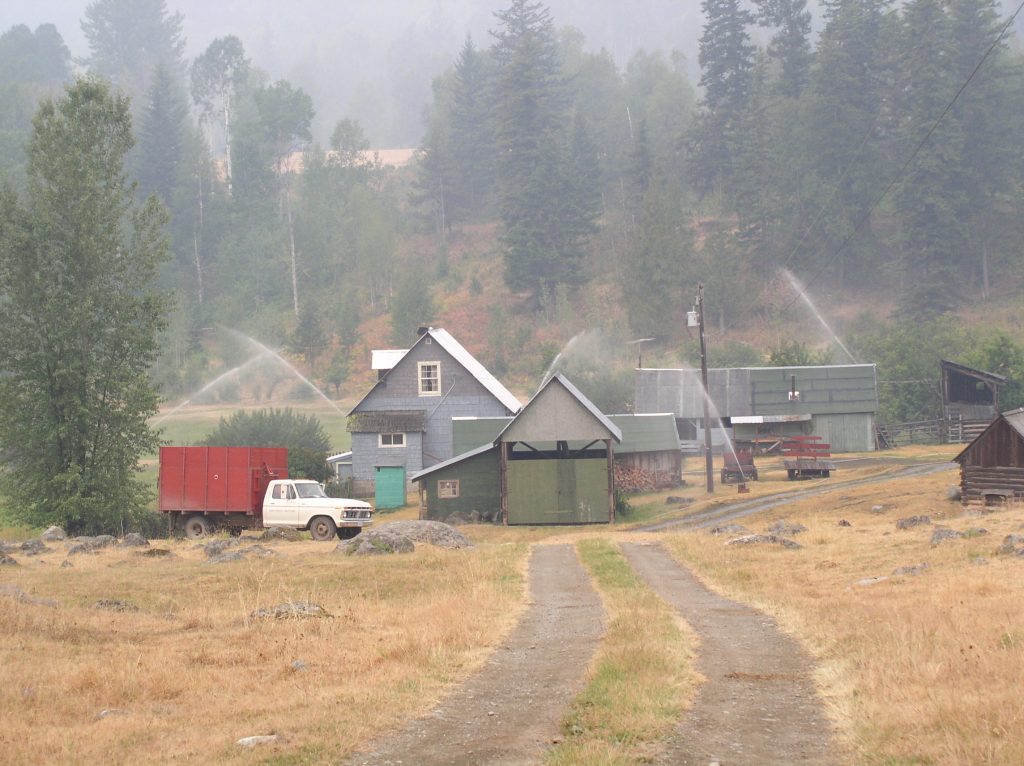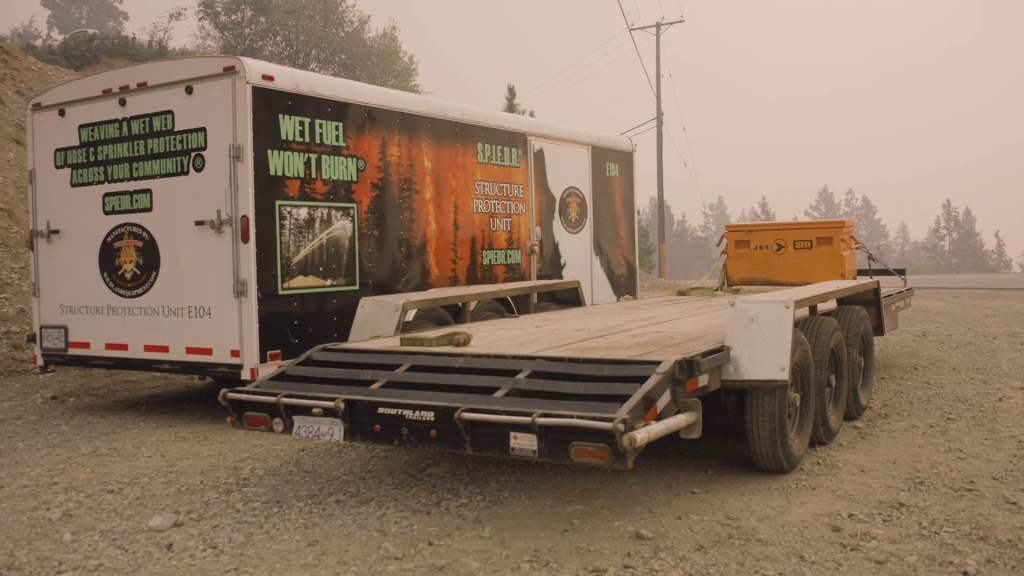When a wildfire is threatening a structure, like someone’s home, the BC Wildfire Service deploys Structure Protection Specialists (SPS) to coordinate protection and defence. These experts, who bring a range of emergency response experience, operate out of trailers called Structure Protection Units (SPUs), which contain pumps, hoses, sprinklers and water delivery attachments and tools. SPUs are strategically placed across the province during wildfire season and transported to areas that may be threatened.

But how do Structure Protection Specialists determine where and how to deploy their resources?
Structure Protection Specialists prioritize the deployment of SPUs based on:
· how “defensible” a property is (whether the SPU would be effective if it’s deployed there)
· where the need for SPUs is greatest (based on anticipated fire growth and activity)
· whether SPU resources are available to be deployed in the area
What makes a structure defensible?
A defensible home has good FireSmart principles applied to the structure and surrounding area. This includes a range of activities - from cleaning out eaves, vents and gutters, and clearing brush, to considering fire-resistant building materials and plants and spacing out trees.
You can use the FireSmart Home Ignition Zone Assessment Score Card for your own property to see what changes will make the most significant difference in reducing your home’s risk from wildfire. More information about FireSmart is available at FireSmartBC.ca or FireSmartCanada.ca.
If a structure and the surrounding property are FireSmart, it will take less time to set up the necessary sprinklers to cover the structure.
How do you determine the greatest need?
This is determined by a wildfire’s proximity to a structure, the fire’s size, and its projected rate of growth. A defensible property that is most likely to be impacted by a particular wildfire will be prioritized for structural protection.
Wildfires are dynamic events, and a structure protection unit may be moved from one property and repositioned to another that is considered to be at a higher risk of ignition. These decisions are reassessed on a daily basis by planning specialists who analyze a particular incident as a whole to ensure the properties with the greatest need are defended.

The safety of first responders and firefighters is a primary consideration when Structure Protection Specialists make triaging decisions. It’s important to understand that it will not always be possible to defend structures, and the safety of people is BC Wildfire Service’s paramount concern.
How do they do it?
Structural Protection Units (SPUs), consisting of sprinkler systems specifically designed to defend structures, create a “humidity bubble” (streams of water) around structures that moisten roofs and other surfaces. This application of water can be effective in extinguishing airborne sparks and embers from wildfire.
Structure Protection Units are often deployed as a precautionary measure to dampen roofs and areas around structures. They are most effective if used in conjunction with properties that have applied FireSmart standard.
In addition to setting up a humidity bubble around the structure, crews can use the hoses and sprinklers to set up a “wet line” to slow or stop an advancing ground fire.
Defensible Structures Case Study: A FireSmart Community
In the village of Hudson’s Hope in the North Peace region of B.C., the community has worked hard to reduce the risk of structure loss to wildfires. This work was rewarded when the community was threatened by the Battleship Mountain wildfire in 2022.
In the video above, Hudson’s Hope Director of Protective Services, Brad Milton, explains how his community’s collaborative FireSmarting efforts made it easier to defend structures from wildfire, and increased safety for responders.
Learn more:
Structure protection – Province of British Columbia (gov.bc.ca)
